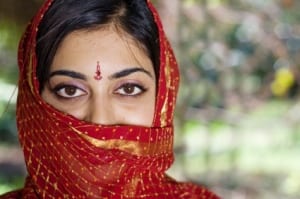
For as long as humans have lived in complex communities, cities and civilizations, they have divided and classified their societies. Those divisions have been based on age, gender, appearance or – in many cases – occupation. In many traditional societies artisans would share the same social status; as would soldiers, priests and workers in any number of other occupations.
Social Stratification
In antiquity, the status of a family rarely changed. If you were a farmer, your sons would be farmers, and so on. While today social status barriers are crumbling in many societies, in others they remain largely unchanged.
India’s complex social stratification, known as the caste system, has been one of the traditional cornerstones of society. Though urban Indians are shedding the caste labels of their parents and grandparents, many rural Indians – who make up 72% of the entire population – hold steadfast to the system. In small villages and towns, the Brahmin caste – consisting of scholars and priests – is still revered as one of the highest social strata. And members of the Dalit caste – formerly known as “Untouchables” – are still viewed as unclean and remain separated from others.
The rigidity of the system still present in rural India has made many wonder exactly how long castes have existed. Historical records are unclear, as early Hindu scriptures like the Bhagavad Gita are somewhat ambiguous when it comes to the topic. Some historians even propose that the caste system as we know it today is largely a construct of the English Colonial Era, arguing that the development of such a system could have been deemed necessary to instill order.
Genetic Analysis
Genetic analysis has also proven inconclusive, as analysis of small segments of the human genome has yielded different results. But a new study by geneticist David Reich and colleagues, published in the September 24 issue of Nature, takes a new approach to understanding the genetic history of India.
The core difference between Reich’s genetic analysis and previous studies is in the sheer amount of genetic material analyzed. Reich’s team examined more than 550,000 points across all segments of the human genome. In doing so, they hoped to obtain a more complete picture of Indian genetic history.
The research team analyzed the DNA of 132 individuals from India and neighboring regions, dividing them into 25 distinct groups based on geography, caste and language. They calculated how genetically ‘closed’ each of these groups were. In the caste system it is rare to marry someone from another class, making caste societies very closed, or ‘endogamous.’ If this endogamy continues over many generations, it will leave a behind a genetic signature for scientists to discover.
Reich and his team found such a signature, indicating a long history of endogamy in several of the groups. In fact, the research team calculated that the DNA of six of the groups can be traced back to just a few individuals who lived anywhere from 30 to more than 100 generations ago. Assuming a generation time of 25 years, that establishes the existence of the caste system in the range of 750 to more than 2,500 years ago – long before the British colonial era.
In a second analysis, Reich and his team examined how ancient migrations could have influenced the formation of castes. First the researchers divided the Indian groups into language families: Indo-European and Dravidian. Dravidian tongues, like Tamil and Malayalam, are mainly spoken in southern India and are believed to be a remnant of languages spoken by some of the earliest inhabitants of the region. Indo-European languages, like Punjabi and Urdu, are more common in the north. They are believed to have arrived with a migration of farmers from southwestern Asia or the Near East about 9,000 years ago.
Reich and his colleagues then compared the genetics of each of the Dravidian and Indo-European groups to a sample of European DNA. The team reasoned that, if Indo-European groups were really descended from the farmers, they would show more genetic similarity to the Europeans than the Dravidians.
Not surprisingly, the authors’ hypothesis held true. The Indo-European speakers, like the Kashmiri Pandit and Vaish, were more genetically similar to Europeans. And because the majority of the upper castes speak Indo-European languages, while the lower ones tend to be Dravidian speakers, there could be a relationship between the arrival of Indo-European people and the formation of caste structure. Further evidence that an ancient caste system has permeated through India for thousands of years.



